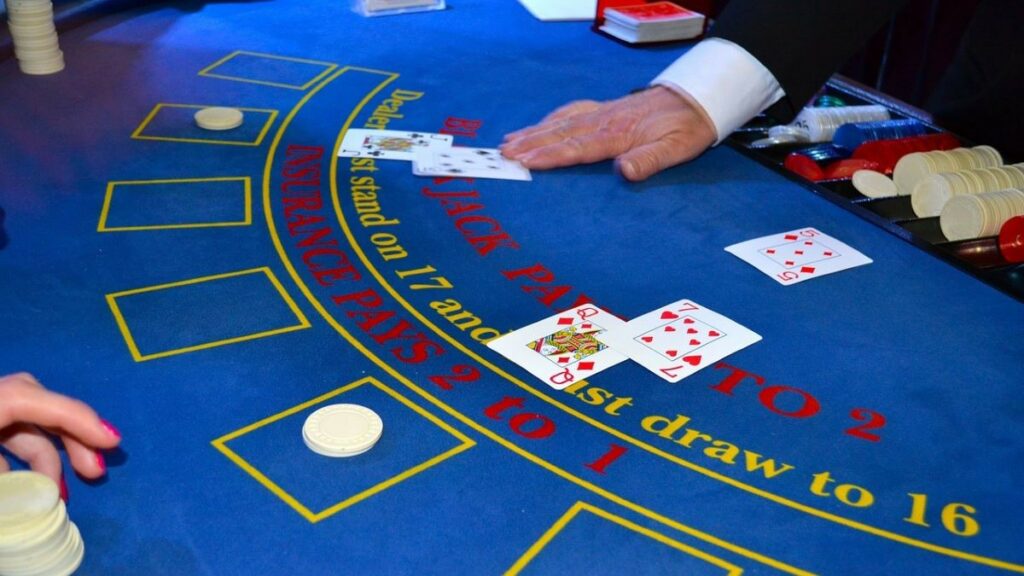Featured image by englishlikeanative via Pixabay
In the kaleidoscope of casino games, few can boast of such a rich tapestry of history as blackjack, more commonly known as Twenty-One.
But where did it all begin, and how did this card game evolve into a casino staple? Let’s take a trip through time and discover the riveting tale of blackjack.
RELATED ARTICLE: TIPS TO MAKE YOUR GAMBLING BUSINESS SUCCESSFUL
Blackjack: From Ancient Beginnings to European Nobility
The origins of blackjack are somewhat unclear. Some historians trace its roots back to ancient Rome, where soldiers might have played a similar game using wooden blocks. While these connections are speculative, there’s a more concrete lineage in Europe.
By the 16th century, a game named “Vingt-et-Un,” which translates to “Twenty-One” in French, began gaining traction among the French nobility. The game had players striving for that perfect score of 21, a foundation that would become integral to modern blackjack. As it meandered through Europe, this pastime was embraced by Spain and Italy, each culture imparting its flavor. The Spanish had a variant named “Ventiuna,” while Italy had “Sette e Mezzo,” or “Seven and a Half,” which though different, shares conceptual similarities.
Crossing the Pond: The American Evolution of Blackjack
When the settlers from Europe began their adventurous voyages to the New World, they not only brought with them hopes and dreams but also their beloved card games. Therefore, “Vingt-et-Un” landed on American shores and quickly found its place in the gambling parlors of the 19th century.
It was in America that “Vingt-et-Un” started its transformation into the blackjack we know today. This is because casinos, in a bid to entice more players, began offering lucrative payouts for a hand containing the Ace of Spades and a blackjack—either the Jack of Clubs or the Jack of Spades. Though this special payout has long since been discontinued, the name “blackjack” stuck.
The Birth of A Strategy
Unlike many other games of chance, blackjack allowed players to influence the outcome through strategy. This is because, by the 1950s and 60s, researchers and mathematicians began analyzing the game, seeking an optimal method of play.
Dr. Edward O. Thorp is one name that stands out from this era. His book, “Beat the Dealer,” unveiled a card-counting strategy that could give players an edge over the house. While this stirred some controversy and led many casinos to shuffle the decks more frequently or introduce multi-deck games, it solidified blackjack’s reputation as a game where skill could intersect with luck.
Digital Age: The World at Our Fingertips
Fast forward to the 21st century, and blackjack underwent another significant transformation. This due to the fact that the rise of the internet saw traditional games find a digital avatar. Online casinos sprouted, offering players a chance to experience blackjack online. This digital renaissance brought innovative variations and side bets, breathing fresh life into the age-old game.
With the further advent of live dealer games, players could now experience the thrill of a real casino setting, replete with a professional dealer, without stepping foot outside. Technology not only preserved blackjack’s essence but also enhanced its reach and appeal.
Cultural Impact of Blackjack
Over the years, blackjack has not just remained confined to the casino floors. It has permeated popular culture. From Hollywood blockbusters to bestselling books, the allure of the green felt table, the shuffle of the cards, and the thrill of hitting that perfect 21 have been encapsulated in various forms. Movies like 21, based on the true story of the MIT Blackjack Team, have further immortalized the game’s charm.
Embracing Modernity: The Role of Augmented and Virtual Reality
The most recent chapter in blackjack’s evolutionary tale is its foray into augmented and virtual reality (AR and VR). These cutting-edge technologies are redefining the gaming experience. Donning VR headsets, players can now immerse themselves in hyper-realistic casino environments, engaging with opponents from around the world in real time.
Augmented reality, on the other hand, superimposes the game into our surroundings, turning any place into a potential gaming spot. As these technologies become more mainstream, they promise to elevate blackjack even further, blending tradition with futuristic innovation, ensuring the game remains at the forefront of casino entertainment.
RELATED ARTICLE: THE BUSINESS OF SPORTS: ARE YOU IN?
In Conclusion: From Past to Present
Blackjack’s journey from ancient civilizations to the digital screens is nothing short of remarkable. It’s a game that has continuously evolved, adapting to the times while preserving its essence. Today, as we place our wagers either on a physical table or through our screens, we’re not just playing a game. We’re becoming a part of a legacy that spans centuries.
Whether you’re a seasoned player, a novice, or just someone with a passing interest, blackjack’s story is a testament to how a simple card game can traverse time and cultures to remain relevant and beloved. The next time you aim for that elusive 21, remember that you’re not just playing a game; you’re continuing a tradition.
RELATED ARTICLE: HOW GAMING COMPANIES IMPLEMENT THEIR MARKETING STRATEGIES


